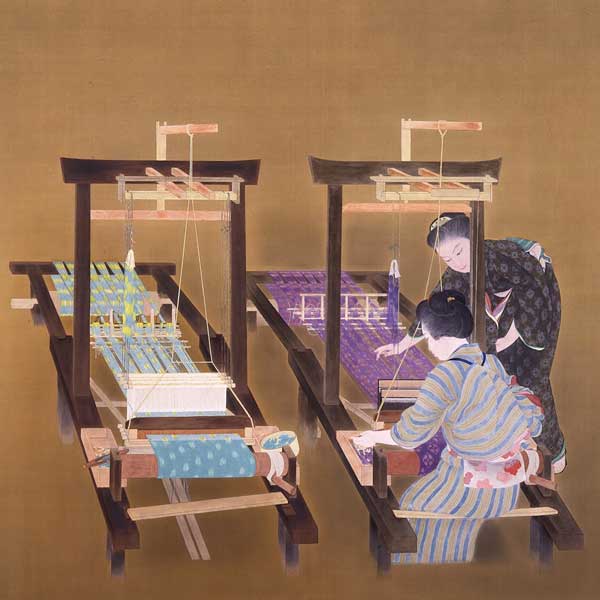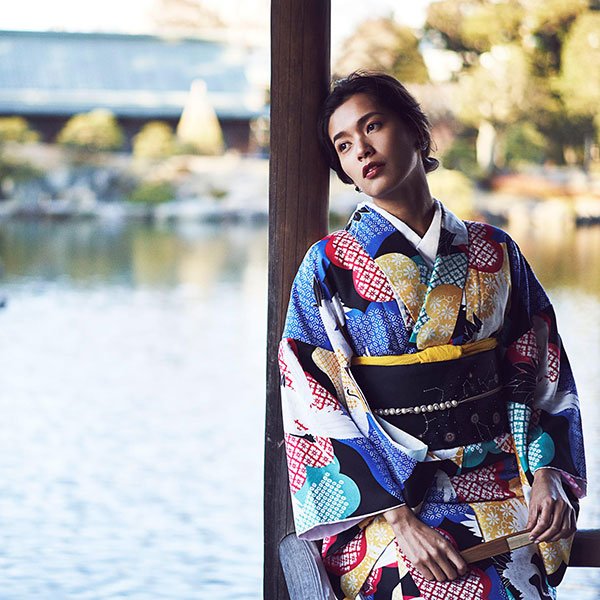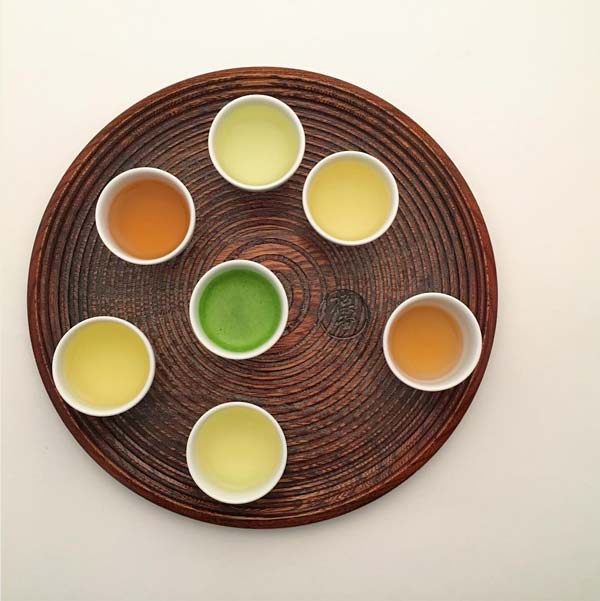8 Cool Things to Do in Sapporo if You Love Art
by Matt Vachon | TRAVEL
Ainu Uimamu by Hirasawa Byozan, 1867
Japan’s northernmost island of Hokkaido is renowned for the splendor of the great outdoors. But it’s not just natural beauty: the island’s capital, Sapporo, is blessed with many one-of-kind artistic attractions. Throughout the city visitors will come across outdoor art installations, world-class museums and unique artisanal crafts. If you’re in the city looking for some inspiration, we’ll show you the best things to do in Sapporo!
1. Moerenuma Park
Designed by Japanese-American sculptor Isamu Noguchi, Moerenuma Park is a massive 400 acre green space surrounded by the Moere Marsh (Moerenuma in Japanese). There is something to be enjoyed in every season, from walking among the park’s 3,000 cherry blossom trees in spring, to renting cross-country skis to traverse its landscape in winter. With its rolling hills and striking art installations, it is the perfect merger of both natural and manmade worlds.
© Sapporo Travel, Sea Fountain
Every aspect of the park clearly shows the thoughtful design of a skilled artist. At its center, an installation called the Sea Fountain produces columns of water capable of reaching 25 meters (80 feet) into the air. Described by its creator as a sculpture of water, it is the heart of Moerenuma Park from which the rest of its features emanate.
© Moerenuma Park, Tetra Mound
Nearby, the gently-sloping 62 meter (200 feet) high Mt Moere offers panoramic views of the entire park, from the modern art inspired children’s play area to Noguchi’s eye-catching stainless steel pyramid known as the Tetra Mound.
© Sapporo Travel, Hidamari
One of the most striking features of Moerenuma Park is Hidamari, a massive glass pyramid, reminiscent of the one found at Paris’ Louvre Museum. Serving as an art gallery and recreation center, perhaps its most clever feature is one that can be felt rather than seen. Near the end of winter, close to 2,000 tons of snow is stored beneath the pyramid. Come summer, it is used as an eco-friendly form of air conditioning for the entire building.
The park is open year round, and as the seasons change, so do the views. From the lush green hills of summer, to a glittering white landscape come winter, Moerenuma Park is one Sapporo attraction that will appeal to art and nature lovers alike.
Address: 1-1 Moerenumakoen, Sapporo (see map)
Website: moerenumapark.jp
Hours: Open daily from 7am to 10pm.
Transport: From Kanjo-Dori-Higashi Station, take Chuo Bus number 61, 69, or 79 to the Moerenuma Koen stop.
2. Sapporo Snow Festival and White Illumination
© Sapporo Travel, Sapporo Snow Festival in Odori Park
Every February, the city of Sapporo comes alive with the annual Yuki Matsuri, or Snow Festival. The tradition, dating back to 1950 when a group of high schools students erected six snow sculptures attracting an unprecedented fifty thousand spectators, exploded onto the global stage in 1974. Since then, this yearly competition has attracted teams from all around the world to come put their winter artistry to the test, not to mention becoming one of the top attractions for Sapporo sightseeing.
© Sapporo Travel, Snow Palace
As the Sapporo Snow Festival has continued to grow, the sheer number of snow sculptures has necessitated its expansion to three different sites around the city: Odori Park, Susukino, and Tsudome. At Odori Park, the original and largest site, hundreds of snow sculptures are featured, some as tall as 15 meters (50 feet). Across town at the Susukino site, ice sculptures line the center of the street like a parade stuck in time.
© Sapporo Travel, Sapporo Illuminations
Another Japanese winter tradition, electric illumination, also got its start in Sapporo. Come late November each year, cities across Japan are lit up with hundreds of thousands of twinkling lights.
More than just your standard lamppost lazily wrapped with Christmas lights, Japanese illuminations are city block-sized art exhibits, each showcasing its own unique theme. As you walk the streets of Sapporo through these electric forests under the falling snow, it makes for a beautiful, surreal ambiance. Sapporo’s largest illumination at Odori Park runs until Christmas day, but others throughout the city can be seen as late as mid-March.
Address: Odori Nishi 1-chome to Odori Nishi 12-chome, Chuo-ku, Sapporo (see map)
Website: snowfes.com
Transport: Take the subway Namboku, Tozai, or Toho Line to Odori Station
If you’re looking for other things to do in Sapporo in the winter, check out our top 10 suggestions for the area!
3. Sapporo Art Park
© Sapporo Travel, Sapporo Art Park
Much like the previously mentioned Moerenuma Park, Sapporo Art Park is a seamless collaboration of Hokkaido’s natural beauty and the creativity of talented artisans. First opened in 1986, this almost 100 acre park is home to multiple facilities catering to nearly every form of art imaginable.
© Sapporo Travel, Sapporo Art Park Sculpture Garden
One of its most popular features, the open air Sculpture Garden, features 74 works of art by 64 different artists. Nearby, an outdoor stage hosts concerts and live performances throughout the summer.
© Sapporo Travel, Sapporo Art Park Sculpture Garden
Those interested in a more direct approach to experiencing art will enjoy a visit to the Craft Studio. Here, visitors can make use of professional equipment to try their hand at pottery, glass making, textile dyeing and more. Throughout the year, the Craft Studio also offers professional-run classes for learners looking to expand their skill set, so if you’re looking for what to do in Sapporo, this place should keep you busy!
Address: 2-75 Geijutsunomori, Minami-ku, Sapporo (see map)
Website: artpark.or.jp
Hours: Open daily from 9:45am to 7pm.
Transport: From Makomanai Station, take the Chuo Bus Line from bus platform 2 and ride until the Geijutsu No Mori Iriguchi bus stop.
4. Hokkaido Museum of Modern Art
© Sapporo Travel, Hokkaido Museum of Modern Art
Easily Hokkaido’s most comprehensive museum, the Hokkaido Museum of Modern Art is home to over 4,800 works by both local and international artists alike. The permanent exhibits in the museum are arranged according to three different categories: local Hokkaido art, works by Jules Pascin and the École de Paris, and a collection of both modern and classical glassworks.
With the changing of the seasons, each collection is changed and reorganized to reflect a newly chosen theme. Throughout the year, the museum also displays a series of travelling exhibits featuring various artists from around the world.
© Sapporo Travel, Inside the Hokkaido Museum of Modern Art
In addition to the artwork inside, the building itself is also a work of art. From its second floor, massive floor-to-ceiling windows overlook the surrounding property; an evolving view that is beautiful in every season. Art lovers will find it the perfect place to sit and relax.
Address: Kita 1, Nishi 17, Chuo-Ku, Sapporo (see map)
Website: dokyoi.pref.hokkaido.lg.jp
Hours: Open daily from 9:30am to 5:00pm.
Transport: From Sapporo Station, take the Hakodate Line to Odori Station. Once here, change to the Subway Tozai Line and ride until Nishi 18 Chome Station. Take Exit 4 and walk approximately five minutes to the museum.
5. Historical Village of Hokkaido
© Sapporo Travel, Hokkaido Historical Village
For the many ways that Japan has embraced all things modern and high tech, it has also managed to expertly preserve its past at the same time. Though Sapporo is a relative newcomer in terms of Japanese cities, it too has embraced the importance of remembering where you came from. At the Historical Village of Hokkaido, historical buildings from around the island have been relocated to create an open-air museum dedicated to the region’s mid 19th century roots.
The village is divided into four distinct areas: city, farm village, fishing village, and mountain village, giving visitors the opportunity to step back in time and experience many different aspects of early Hokkaido life. Each building and home has been carefully rebuilt and staged for historical accuracy; a snapshot of a typical day for the early Japanese settlers in Hokkaido.
© Sapporo Travel, Hokkaido Historical Village Horse-Drawn Carriage
More than just a still life exhibit, visitors can also watch live demonstrations of traditional activities such as straw weaving and printing press operation. During the summer, guests can take a ride through the village on a horse-drawn carriage, which in the winter becomes a horse-drawn sleigh. This nostalgic touch is the perfect way to experience the classic charm of the historical village. Anyone who likes to live history rather than just read it should add this to their list of things to do in Sapporo.
Address: 50-1 Atsubetsucho Konopporo, Atsubetsu-ku, Sapporo (see map)
Website: kaitaku.or.jp
Hours: The village opens daily at 9:00am, but closing time varies by season. Please see their website for details.
Transport: From Sapporo Station, take the airport express train to Shin-Sapporo Station. Once here, take the JR Hokkaido bus number “Shin 22” approximately 15 minutes until you arrive at the Historical Village.
Another historical museum you might be interested in is the Sapporo Beer Museum: check out Things You Might Not Know About Sapporo Beer to find out more!
6. Ainu Culture Promotion Center
Ainu Uimamu by Hirasawa Byozan, 1867
The Ainu are the indigenous inhabitants of Hokkaido, and were the majority population as late as the 19th century when the island was officially incorporated into Japan. Over time the Ainu have assimilated into Japanese society to the extent that today there are only an estimated 100 people remain who can still speak the traditional Ainu language.
© Sapporo Travel, Ainu Culture Promotion Center
Thankfully, Sapporo recognizes the importance of preserving the Ainu history and established the Ainu Culture Promotion Center. Here, visitors can see and touch over 300 traditional Ainu items, such as tools and elaborately designed clothing, to get a tactile sense of what life was in early Hokkaido history.
Throughout the year, the cultural center also holds seasonal events and workshops where visitors can take part in a variety of experiences, from making Ainu crafts and instruments, to eating traditional Ainu foods.
Address: 27 Koganeyu, Minami-ku, Sapporo (see map)
Website: city.sapporo.jp
Hours: Open every day except Monday, from 9am to 5pm.
Transport: From the Sapporo Ekimae bus stop, take the Toyohiro Gorge Hot Spring bus line three stops (roughly 45 minutes) to the Koganeyu bus stop. From here, the cultural center is approximately 5 minutes away on foot.
7. Kanata Art Shop
Those interested in taking some home some Sapporo art should not miss a visit to Kanata Art Shop. In this small store with an art gallery feel, handmade crafts from local Hokkaido artisans have been carefully curated in order to feature the best of both form and function.
© Kanata Art Shop, Tea Bowls
Everything from furniture, to tableware, to fashion items have been brought together in order to shine a spotlight onto lesser-known talented craftspeople. The amount of passion and skill that has gone into every item in this shop is so readily apparent that something as simple as a lacquered serving tray feels more like a piece of art than a mere object. A nice bonus is that the store also provides tax-free shopping for foreign visitors, so don’t forget your passport!
Address: 6F Daigo Building, 5 Odori Nishi, Chuo-ku, Sapporo (see map)
Website: kanata.in
Hours: Open daily from 11am to 7pm.
Transport: From Sapporo Station, the shop is approximately 12 minutes away on foot.
8. Farmer’s Herb
Since 1991, Farmer’s Herb in Hokkaido has been making herbal products with organic, pesticide-free herbs. Though not what one would typically expect when considering art, the dedication that goes into growing the herbs and creating the designs they sell is no less an artform than any other medium.
© Farmer’s Herb, Teas
At their Sapporo store, customers can sample a variety of their most popular teas, including locally-grown chamomile, mint, and other herbal blends. As either a gift for a loved one or yourself, it’s the perfect way to experience the artisanal flavors of Hokkaido.
Address: 3 Odori Nishi, Chuo-ku, Sapporo (see map)
Website: koyu-seikatu.co.jp
Hours: Open daily from 11am to 8pm.
Transport: From Sapporo Station, the shop is approximately 12 minutes on foot.
Still have a lot of shopping energy? Why not head west to the city of Otaru, where they specialize in handmade glassware. Here’s our advice on how to plan for Two Perfect Days in Otaru!
This article is sponsored by the Japan National Tourist Organization (JNTO).













TRAVEL | April 26, 2024